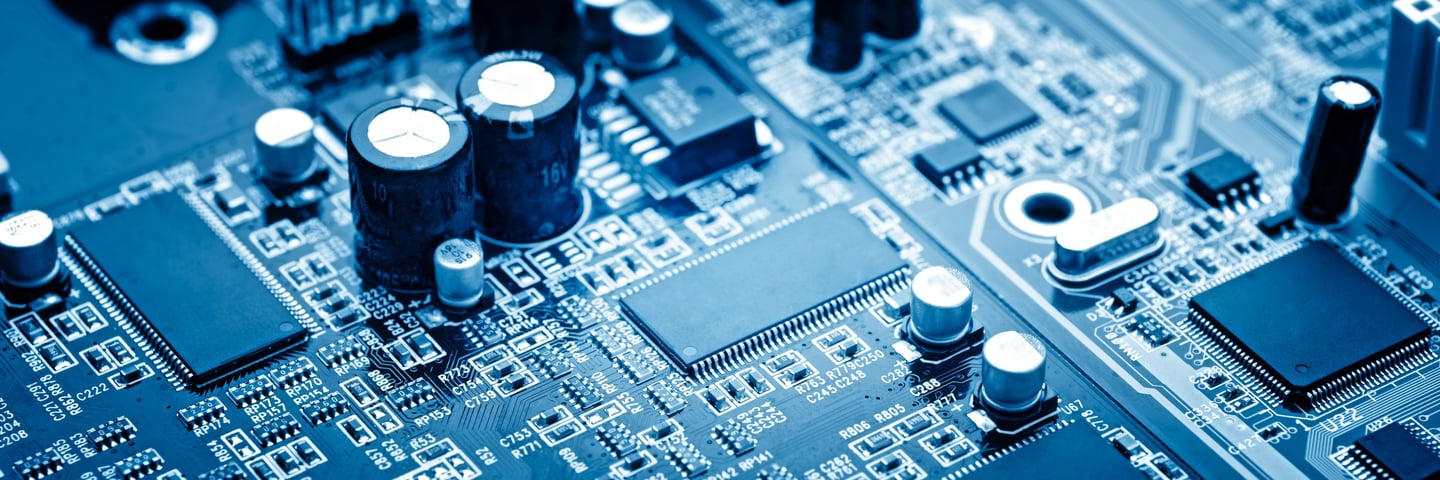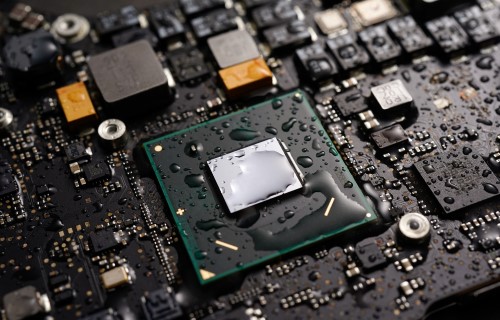
Printed circuit boards, or PCBs for short, are essential parts of all electronic devices. One of the main challenges in PCB manufacturing is the adhesion of the conformal coating. To ensure good conformal coating adhesion, the surface of the PCB needs to be properly cleaned prior to the coating process. There are several methods developed to check the cleanliness of the PCB of which the contact angle measurement is one of the most easily conducted. Contact angle measurements can also be used to verify that the surface is ready for the coating formulation to ensure good adhesion between the materials.
Removal of the excess flux is an important part of the soldering process. This is because some fluxes are corrosive, and their residues may continue their activity and harm the circuit boards at a later stage.  Due to the detrimental effects of flux on the PCBs, there is a vast range of cleanliness tests available for PCBs. These include ion chromatography, Resistivity of Solvent Extract (ROSE) testing, surface insulation resistance testing (SIR), and visual tests. Out of those ROSE is by far the most popular one. The main advantage of the ROSE test is the speed of testing together with the low price. The problem is that it is not able to detect all kinds of contamination, and those that it does are averaged over the whole surface tested. Water contact angle measurements offer a great alternative for the ROSE test. Water contact angle measurements are performed by placing a drop of water on the PCB. If the water beads up (i.e., the contact angle is high), the surface is not ready for conformal coating. If the water spreads (i.e., the contact angle is low) the surface is free of organic contaminants, and the coating can be done. One advantage of a contact angle measurement is that it can be done also on extremely small areas.
Due to the detrimental effects of flux on the PCBs, there is a vast range of cleanliness tests available for PCBs. These include ion chromatography, Resistivity of Solvent Extract (ROSE) testing, surface insulation resistance testing (SIR), and visual tests. Out of those ROSE is by far the most popular one. The main advantage of the ROSE test is the speed of testing together with the low price. The problem is that it is not able to detect all kinds of contamination, and those that it does are averaged over the whole surface tested. Water contact angle measurements offer a great alternative for the ROSE test. Water contact angle measurements are performed by placing a drop of water on the PCB. If the water beads up (i.e., the contact angle is high), the surface is not ready for conformal coating. If the water spreads (i.e., the contact angle is low) the surface is free of organic contaminants, and the coating can be done. One advantage of a contact angle measurement is that it can be done also on extremely small areas.
Conformal coatings are used to protect the PCBs from environmental conditions such as high humidity, a range of airborne contaminants, and varying temperatures. Most of the carrier materials for PCBs are made of glass fiber reinforced plastics which typically have a low surface free energy values at around 40 to 45 mN/m. Furthermore, the surface free energies of the individual components and assemblies vary greatly. This makes the conformal coating difficult and adding a cleaning step might not be sufficient to increase the surface free energy to the required level. As a common rule, the surface tension of the conformal coating should be at least 10 mN/m lower than the surface free energy of the substrate. Plasma activation of the PCBs can be used to increase the surface free energy and thus ensure more homogenous wetting of the PCB. Contact angle measurements can be used at various stages of the process. First to check the surface wettability at the beginning and then to find proper plasma treatment parameters to reach the required levels. Contact angle also provides an excellent tool for quality control purposes to make sure that the process is under control at all times.
If you would like to read more about how contact angle measurements can help you to ensure good adhesion, download the white paper below.
Standard contact angle measurement considers the surface's chemical properties. The influence of surface roughness is added by utilizing the Wenzel equation.
Cohesion and adhesion are fundamental concepts in the study of physics and chemistry, playing crucial roles in various natural and industrial processes.
Surface inspection is done to guarantee optimum surface properties for coating and bonding
A spreading coefficient is a measure of the wetting behavior of a liquid on a solid surface.
Wetting and adhesion analysis has been added to our all-inclusive OneAttension software and is available for download for all OneAttension customers.
Contact angle measurements offer a fast and sensitive way to evaluate the effectiveness of different cleaning processes.
Depending on the strength of these forces, the adhesion failure can be either adhesive, cohesive, or substrate failure.
Adhesion problems are one of the main reasons for the failure of the product. Read to find out how contact angle measurements can help solve the problem.
